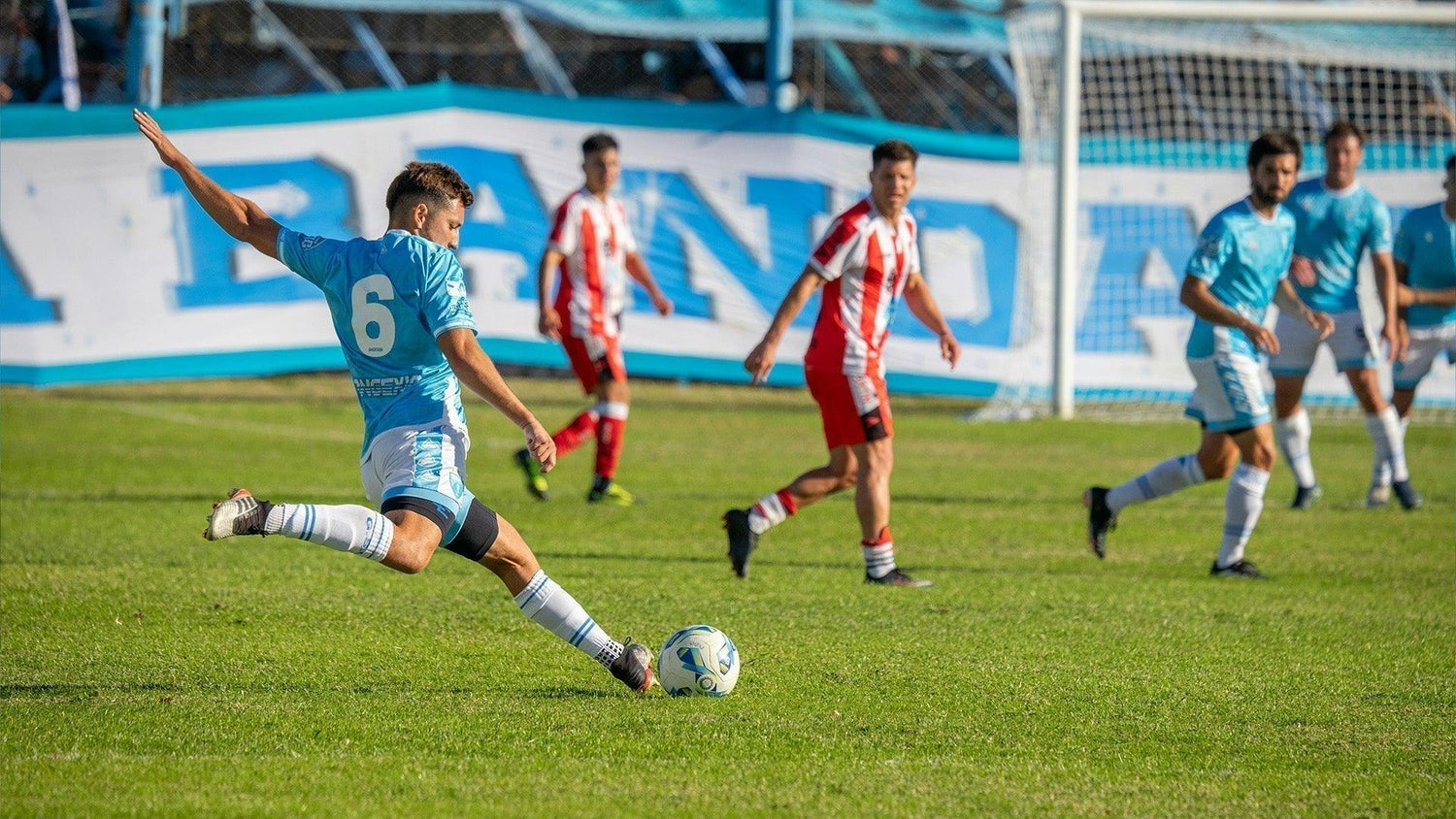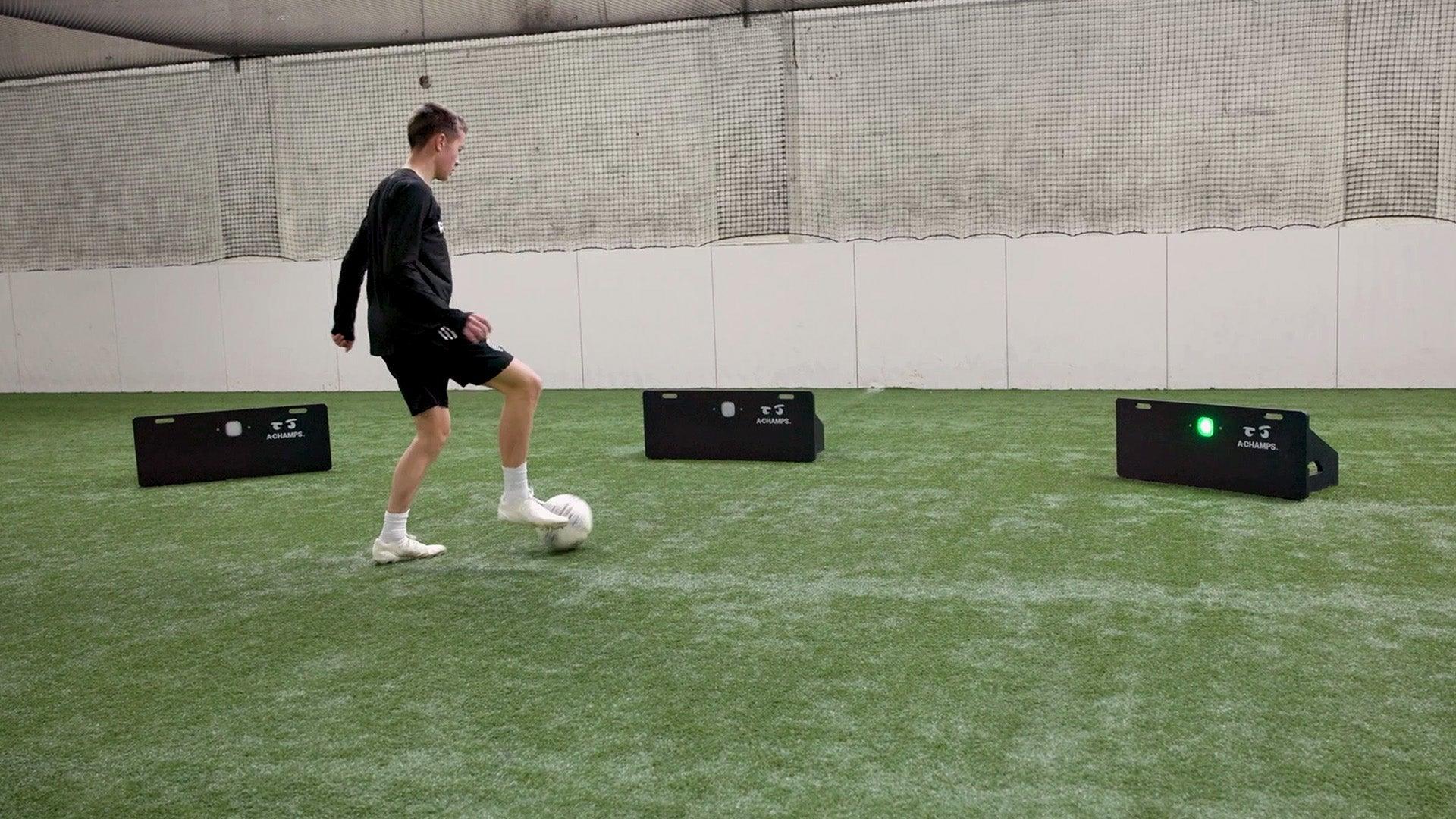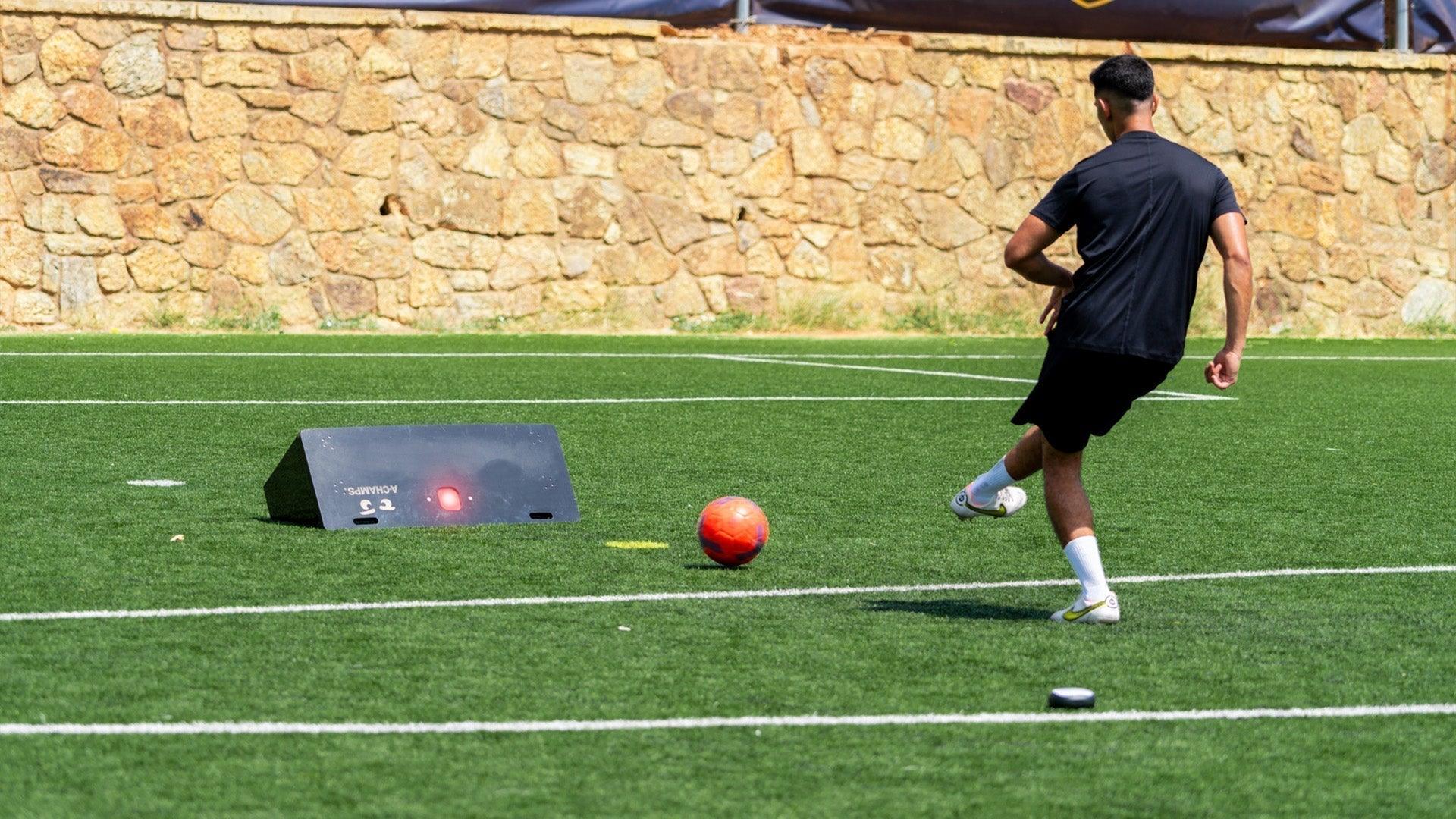When it comes to elite soccer playing, unpredictability is the best tool a soccer player can use against opposing teams. Developing the skill of using both feet during gameplay not only improves your unpredictability but also brings a number of additional benefits to elevate your in-game performance.
Mindset Before Movement: The Real First Step to Being Two-Footed
The biggest barrier to becoming two-footed isn’t physical — it’s psychological. Most players instinctively avoid their weaker foot because it feels awkward, even embarrassing. But that discomfort is exactly where the growth begins.
Building two-footed ability isn’t about chasing perfect symmetry but rather giving players the flexibility and confidence to solve more in-game problems. That shift starts with the right mindset: moving from “I’m right-footed” to “I’m developing both feet.”
How many soccer players are two-footed?
Studies have reported that only 1% of the population are naturally ambidextrous. This would mean that currently, only 1% of current soccer players were born two-footed. However, it has been shown that nearly one out of six professional soccer players are two-footed. So how do these professional athletes develop the ability to use both feet in soccer? Diego Forlan has spoken on how he used to kick a tennis ball against a wall for hours on end with both his feet. Simple exercises like practicing with a tennis ball, are key to you achieving being a two-footed player. The RebounderGo and RebounderPro allow you to practice an exercise such as kicking a tennis ball, but elevate the exercise so that you can also focus on your precision and accuracy with your kicks.
 What do Professionals Think About Being Two-Footed?
What do Professionals Think About Being Two-Footed?
In an interview, Freddie Ljungberg and Arsene Wenger discussed the importance of being what they called, “right-left footed.” Wenger spoke on how modern day soccer players are going to be adjusting their training to develop their two-footed skills saying, “I am convinced that the modern player will be right-left footed because of the pressure, it gives you time and angles to pass the ball and get out of the pressure.” Wenger has immense experience and knowledge of soccer, formerly being Arsenal’s longest-running manager in history. Attaining the skill of two-footed soccer play is now one of the expected talents from the perspective of one of the most successful managers in FIFA history. So why does it matter so much?
The Benefits of being two-footed
Unpredictability
Being two-footed means that you have enhanced unpredictability on the field, as well as better control of your balance and coordination. A good defender will be able to determine how you will use your dominant foot during gameplay, allowing them to intercept you or the ball. By being able to use both feet, you become unpredictable in the sense that the opposing defender cannot know what to expect you to do. This unpredictability allows you to have more control over the decisions of the defender and also control the pace of the game.
Balance
Balance is a major factor of improving gameplay in soccer. If you only use your dominant foot during gameplay, there is a good chance that you often have to extend your leg across your body to reach a ball that comes to your non-dominant side. Doing this throws your body off balance and can cause you to misstep, lose control of the ball, or even fall. By being two-footed, you can receive a pass, lead with the ball, and shoot with both feet. This allows you to maintain your balance and optimize your gameplay.
Coordination
Having enhanced coordination allows you to make quick movements and decisions during games. Being two-footed allows for easier maneuverability in a loose ball situation, maneuverability that comes with increased coordination. This can help players who face high pressure that need a quick response, being two-footed improves coordination to know where the ball is and how to get control of it.
Contextualized Coaching: From Weak Foot to Smart Player
Modern training goes beyond drills. At SC Braga’s academy, coaches implemented “Weak Foot Week” — one week each month where players could only pass and shoot with their non-dominant foot. Dribbling and control remained free, but everything else had to be done with the weak foot.
This constraint created a powerful learning environment: not only were players forced to adapt, they did so in realistic, high-pressure game scenarios. Rebounders like the RebounderPro become even more valuable here — they replicate real match conditions by integrating variability, reaction, and cognitive processing into technical training.
 Why You Should Start Training to be Two-Footed?
Why You Should Start Training to be Two-Footed?
Develop Techniques Faster
By learning how to use both feet at a young age, you give yourself a competitive advantage compared to other players. Being able to control and handle a soccer ball confidently with both feet at a young age shows that you will be able to pick up certain techniques and skills faster and will be able to adapt them to both feet. This also relates back to the idea that you will have enhanced balance, coordination, and unpredictability, which also allow you to develop new skills and techniques faster than those who are not two-footed.
Less Injury Prone
Learning to be two-footed at a young age also protects you from having an injury compared to players who only use their dominant foot. This is because you would not be relying on your dominant side to make plays, which puts a strain on the muscles in your leg. Players that train two-footed have a better balanced development and this is important for younger players because they are still growing and it promotes development among all their muscle groups.
Conclusion
Being a two-footed soccer player is a game-changing skill to have that brings multiple benefits with it. From improved coordination and balance, to enhanced unpredictability, and injury prevention, the advantages of training to be two-footed are innumerable. Starting young to become two-footed lays the groundwork for a successful soccer career as it promotes technical and developmental skill growth. Whether you are just starting out in soccer or are a seasoned veteran of the sport, it is never too late to start training to be two-footed.
Frequently Asked Questions
Can anyone become two-footed, or is it natural talent?
Only about 1% of people are naturally ambidextrous, but nearly one in six professionals develop usable two-footed skills through training. It's a learned skill.
What’s the best age to start training both feet?
The earlier the better. Youth players have higher neuroplasticity, making it easier to build symmetrical technical skills.
What are the most effective drills to improve weak-foot ability?
Drills that simulate real match conditions, such as rondos, 1v1s with weak-foot-only constraints, and reactive rebounder sessions are highly effective.
How does weak-foot training help prevent injuries?
It leads to more balanced muscle development and reduces strain on one side of the body, which can decrease the likelihood of overuse injuries.
How do tools like RebounderPro enhance two-footed training?
They create unpredictable, game-like stimuli that integrate cognitive processing, reaction timing, and bilateral foot control in every repetition.





Leave a comment
This site is protected by hCaptcha and the hCaptcha Privacy Policy and Terms of Service apply.